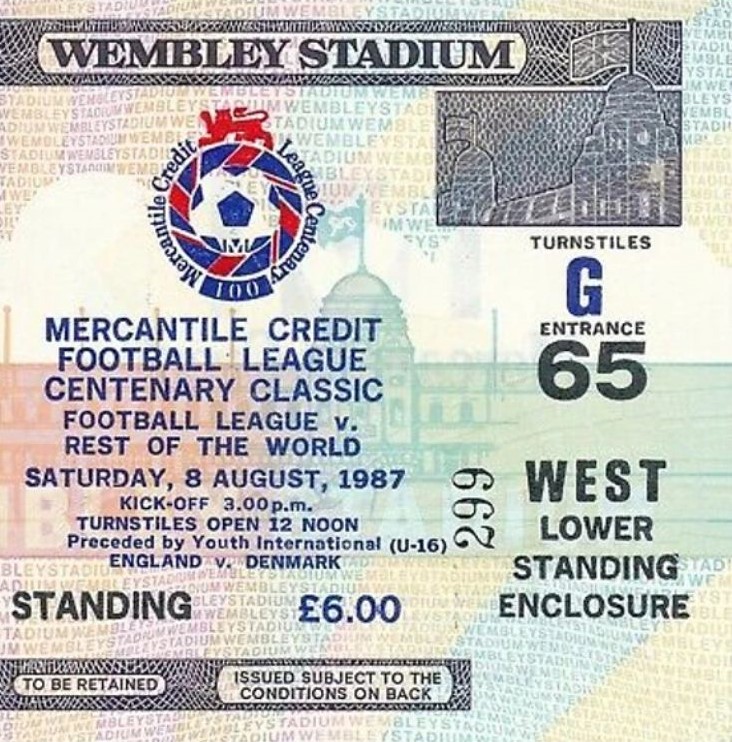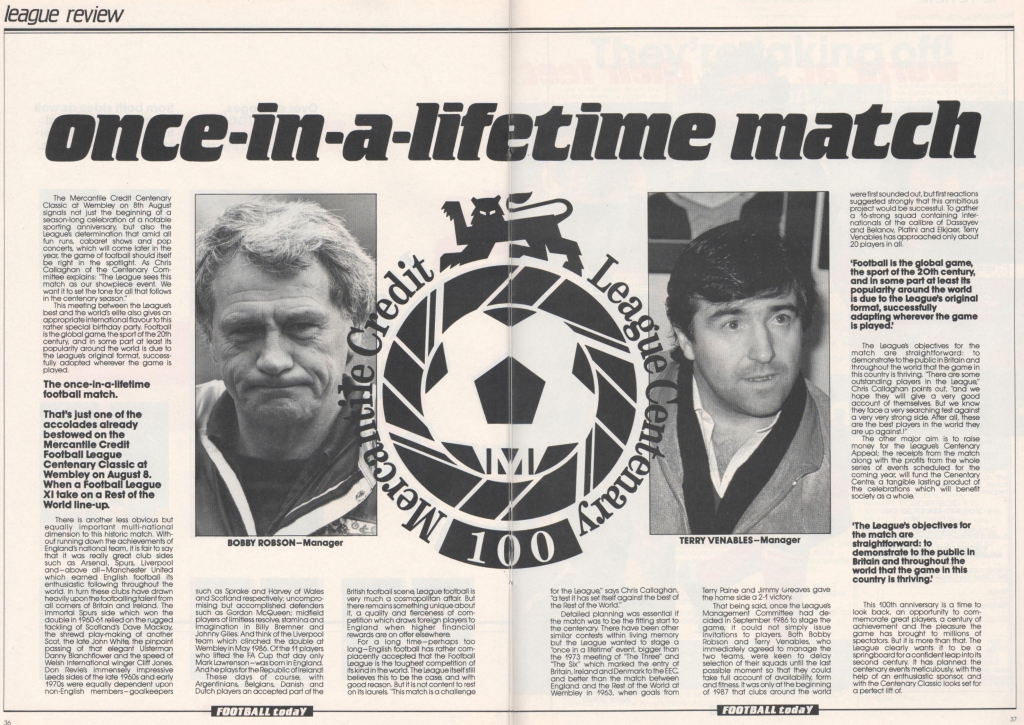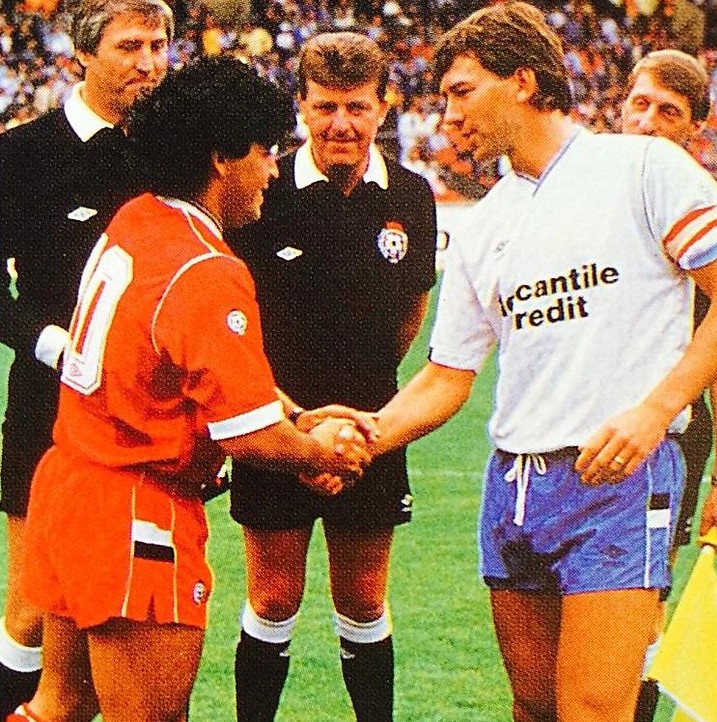
The football league of England and Wales was founded in 1888, making it the oldest league competition in the world; also it was the blueprint that other countries used to form their own leagues. The governing body that oversees the league and two cup competitions, the League Cup and the Football League Trophy has the name of The Football League. The name William McGregor is a very important one in the history of the Football League. McGregor was born in Braco, Perth and Kinross in 1846. He moved south of the border to Birmingham to work in the textile industry. Once settled in the Birmingham area McGregor became a director of Aston Villa. Football turned professional in England during the summer of 1885, however there was no single organized league system in England back then. Back then there were a few smaller “combinations” where groups of teams from a particular region would play each other. McGregor was keen to bring some organized running to the football calendar, a structured system that would encompass all teams from all areas. So who were the very first English champions? With two points being awarded for a win and one point for a draw that honour goes to Lancastrian club Preston North End, winning the title in a twelve team division at the end of the 1888 – 1889 season. Their top scorer with twenty one goals was John Goodall, a 26 year old Londoner who arrived at Preston North End in 1895 from Great Lever FC. Great Lever were a club from Farnworth in Bolton, unfortunately they would fold before the turn of the century. Finishing runner’s up to Preston North End was Aston Villa on twenty nine points, eleven points behind Preston, third was Wolverhampton Wanderers a point behind Villa. The teams finishing at the bottom in that inaugural season were Burnley, Derby County, Notts County and Stoke City; these clubs would have to apply for re-election to the league in order to continue in the division. Re-election would continue for another four years until the introduction of the Second Division which made its first appearance in the game in 1892 when the Football Alliance was merged into the Football League.

This new dynamic into the English game of automatic promotion and relegation came about after it had come to light that Burnley and Stoke City illegally conspired during the re-election process to make sure that they were both playing First Division the following season. The game was rising in popularity in England and as the 19th century was drawing to a close both the First and Second Division expanded to include eighteen teams. Understandably the First World War would see the game of professional football suspended for the duration; upon the recommencement in 1919 the First Division expanded once again this time to include twenty two teams. 1920 saw the introduction of the Third Division South which was made up of teams from the Southern League, the same Southern League that is now known as the Evo Stick League Southern whose current champions are Corby Town of Northamptonshire. A Third Division North was also formed which included such teams as Grimbsy Town, Tranmere Rovers and Chesterfield to name three. In 1958 both these leagues merged to form the Third Division. The first champions of the Third Division North was Stockport County, the first winners of the Third Division South was Southampton. So, like I’ve mentioned both of these leagues were merged together to make the Third Division in 1958 and at the same a fourth division came into being which meant that there was now ninety two professional clubs in the Football League. Promotion and relegation in the bottom two divisions would comprise of four teams going up and four teams falling into the Fourth Division. With the upper two divisions it would be a case of two teams being relegated from the First Division with two teams being promoted from the Second, this changed in 1974 when the number of teams being relegated and promoted between the top two divisions increased to three teams.
“When a player has kicked the ball, anyone of the same side who is nearer to the opponent’s goal-line is out of play, and may not touch the ball himself, nor in any way whatever prevent any other player from doing so, until he is in play…”
That’s the offside rule, something that has often had people scratching their heads, understandable to a certain extent; it’s a rule that changed often throughout the 20th century. When The Laws of The Game were first written in the 19th century no forward passes were allowed apart from kicks from behind the goal line, so as you can see football today is very different from when the sport was in its infancy. Like in recent times the offside rule back then was often the biggest bone of contention between football clubs; the rules were written and re-written. 1925 saw one of its many rule changes that change being a reduction from three defending players to two between the players and the opponent’s goal line. As recently as 1990 the rules were changed again, the new rule now saying that an attacking player was onside if he was level with the second to last opposing player. This new amendment brought in was said to encourage more attacking football, the other opposing player of that rule is of course the opposing goal keeper. Other notable introductions to the game of association football include the goal kick, first introduced in 1869 and the corner kick made its debut in football in 1872. Other dates of interest, 1891 saw the penalty kick first introduced to the game and in 1878 spectators saw the match referee use a whistle for the first time. 1958 saw the introduction of substitutes to the game of association football, 1970 saw the introduction of the yellow and red cards and 1992 saw the back pass rule brought in to football. In 1981 the points for a win was increased from two to three points in an effort to again encourage a more attacking ethos into the game.

The football authorities have often tinkered with the rules in an effort to make the game more entertaining and bring it up to date with the modern way of how people saw the game of football. Just before the onset of the Second World War it was largely felt that the Laws of The Game needed an over haul. Clubs back then had been following rules that had been written by the Victorians, the game had seen change yes, but the rules needed to be rewritten, brought into the 20th century, a modern game for the modern world. Stanley Rous, later to be FIFA President in 1961 was given the job. Rous did such a good job the rules weren’t revised again until 1997. The game of Association Football on a worldwide level has seen much change since the 19th century; since 1888 the Football League in England and Wales has been at the forefront of those revolutionary ch1988 was the centenary year of the Football League; the organization was one hundred years old and to celebrate this the Football League would organize events and other one off special occasions to mark the milestone. The first of these special events was a once off match between the players of the Football League versus players from the football leagues of other countries. The match was sponsored by Mercantile Credit, a credit institution founded by the Bank of Uganda in 1986. The Football League thought that a fixture between the Football League’s best players against the world’s best players would be an excellent way to kick off a season of celebration to mark the one hundred years since the founding of the Football League. The then spokesman of the Centenary Committee, Chris Callaghan said…
“The League sees this match as our showpiece event.We want it to set the tone for all that follows in the centenary season.”
By the end of the 1980’s football in England was a very cosmopolitan affair, players from many different countries had been plying their trade in England for years. A match between the players of the Football League against the rest of the world was extremely appropriate. England had given the game of football to the world and whilst the match was feted as a celebratory event, it wasn’t lost on the Football League that this game would be a yardstick to see just how good the standard was in the Football League in England. It has often been said that the league in England is the best in the world and now they had the chance to see how they fared against a team made up of the best players in the world, as Chris Callaghan again added…
“This is a challenge match for the league, a test it has set itself against the best of the rest of the world.”
There had been matches between the English league and the rest of the world before, the proposed fixture at Wembley stadium that would take place on August 8th 1987 not a new idea. A similar fixture had occurred in 1963 which saw the English Football League come out on top against an international side to the tune of 2 – 1, the goals coming from Jimmy Greaves and Terry Paine. That game in 1963 was by invitation only, this time the Football League wanted a more rigid professional feel to the game. The late Sir Bobby Robson and Terry Venables were approached to manage the two sides, Bobby Robson would manage the Football League side and Terry Venables would manage the Rest of The World. Back then Bobby Robson was the England manager and had been so since 1982, before that he had built an excellent Ipswich Town side that had achieved European glory by lifting the UEFA Cup; Venables was the manager of Spanish side Barcelona. Venables had taken QPR from the Second Division to the first as well as taking them to an FA Cup final. A couple of months on from that Centenary game in August he would be named as the new manager of Tottenham Hotspur. The two managers were keen to accept the roles for the Wembley game. The two men took to their task quite seriously, choosing not to make public their squads until the last minute, there were players still on pre-season campaigns while others were still recovering from injury. Each manager could name an eighteen man squad for the fixture and right up until the eve of the game both managers were keeping their cards close to their chest, both wanted to win the game. As mentioned the Football League were quite serious about this fixture too, they wanted to show that the game in England and Wales was thriving. They wanted to demonstrate not just to the public within the United Kingdom, but also to the rest of the world, just how well football was doing in England and Wales. As Chris Callaghan said in 1987…
“There are some outstanding players in the Football League and we hope they will give a very good account of themselves.But we know they face a very searching test against a very very strong side.After all, these are the best players in the world they are up against.”
Terry Venables eighteen man squad was full of experience and talent, players who played for the top sides in the world, players who had won major honours of varying types. In goal was Rinat Dasayev of Spartak Moscow and the Soviet Union, the outfield players were Josimar of Botafogo and Brazil, Celso of FC Porto and Brazil, Julio Alberto of Barcelona and Spain, Glenn Hysen of Fiorentina and Sweden, Salvatore Bagni of Napoli and Italy, Thomas Berthold of Verona and West Germany, Gary Lineker (the only Englishman in the Rest of The Word side) of Barcelona and England, Michel Platini who had just called time on his playing career with Italian club Juventus, Diego Maradona of Napoli and Argentina and Paulo Futre of Atletico Madrid and Portugal. The substitutes on the day were Lajos Detari of Eintracht Frankfurt and Hungary, Igor Belanov of Dinamo Kiev and the Soviet Union, Peter Larsson the Swedish international who had just joined Ajax Amsterdam from IFK Gothenburg, Preben Elkjær of Verona and Denmark, Alexander Zavarov of Dinamo Kiev and the Soviet Union, Dragan Stojković of Red Star Belgrade and Yugoslavia and Andoni Zubizarreta of Barcelona and Spain.

Bobby Robson’s Football League side consisted of Peter Shilton of Derby County and England, Richard Gough of Tottenham Hotspur and Scotland, Kenny Sansom of Arsenal and England, John McClelland of Watford and Northern Ireland, Paul McGrath of Manchester United and the Republic of Ireland, Liam Brady of West Ham and the Republic of Ireland, Bryan Robson the captain of Manchester United and England, Neil Webb of Nottingham Forest and England, Clive Allen of Tottenham Hotspur and England, Peter Beardsley of Liverpool and England and Chris Waddle of Tottenham Hotspur and England. On the subs bench was Steve Clarke of Chelsea and Scotland, Steve Ogrizovic of Coventry City, Ossie Ardiles of Tottenham Hotspur who was about to join Blackburn Rovers, Pat Nevin of Chelsea and Scotland, Norman Whiteside of Manchester United and Northern Ireland, Alan Smith of Arsenal and Kevin Sheedy of Everton and the Republic of Ireland.

The football League side would wear a kit comprising of a white shirt, blue shorts with blue socks, the Rest of The World team would wear a full red kit. 61,000 fans were at Wembley that Saturday afternoon of August 8th; maybe not the bumper crowd the Football League were hoping for, however as the teams made their way out onto the Wembley turf they were met with a bedlam of noise, those fans that had paid the thirty quid for a ticket had obviously looked forward to the game. An old rivalry was reconvened that day. Bryan Robson was matched with Diego Maradona again. Those two players had first met during the UEFA European Cup Winners Cup quarter final tie of the 1983 – 1984 season when Robson’s Manchester United played Maradona’s Barcelona. Following a fantastic night at Old Trafford Robson had emerged victorious. The two had met again during the World Cup of 1986, this time Maradona’s Argentina were the winner’s against Robson’s England in Mexico which was the game that featured Maradona handling the ball into the England net, a goal that should never have been given. This time Robson would come out on top. Indeed it was Captain Marvel himself who opened the scoring, putting the Football League in front in the twenty third minute with a superb header via a cross from Kenny Sansom. It remained 1 – 0 until half time when substitutions were made, amongst them the Shankill Skinhead, Norman Whiteside. It was Big Norm who put the Football league 2 – 0 up in the game when Liam Brady saw Whiteside in a goal scoring position; Brady slotted the ball in, Whiteside found the net.

With only a couple of minutes of the game remaining Robson made it 3 – 0 after a clever bit of play by the Football League side that allowed Norman Whiteside to cross the ball into the area, Robson received the ball from his United team mate and calmly put the ball past the goal keeper. That’s how the game finished, 3 – 0 to the Football League. Robson had got himself a couple of goals and had ran the midfield from start to finish. Liam Brady also had an excellent game, as had Kenny Sansom and Paul McGrath. Both Whiteside and McGrath would soon leave Manchester United and both players would also go on to play great football for their new clubs, Norman to Everton and Paul with Aston Villa. Robson would go on to lift more silverware for United, culminating in the inaugural Premiership trophy. Watching video reruns of that game I would have loved to have had Liam Brady at Old Trafford, the guy was world class, he would have lit up today’s Premiership if he was still playing today, in his prime. Oh yes, the Premiership! The football landscape would change again in England in the early 1990’s, but that’s a completely different story…
